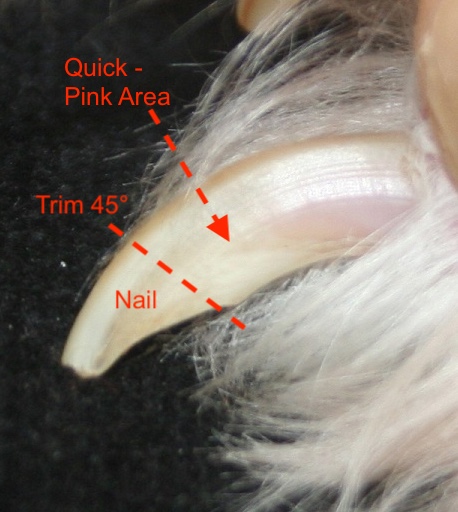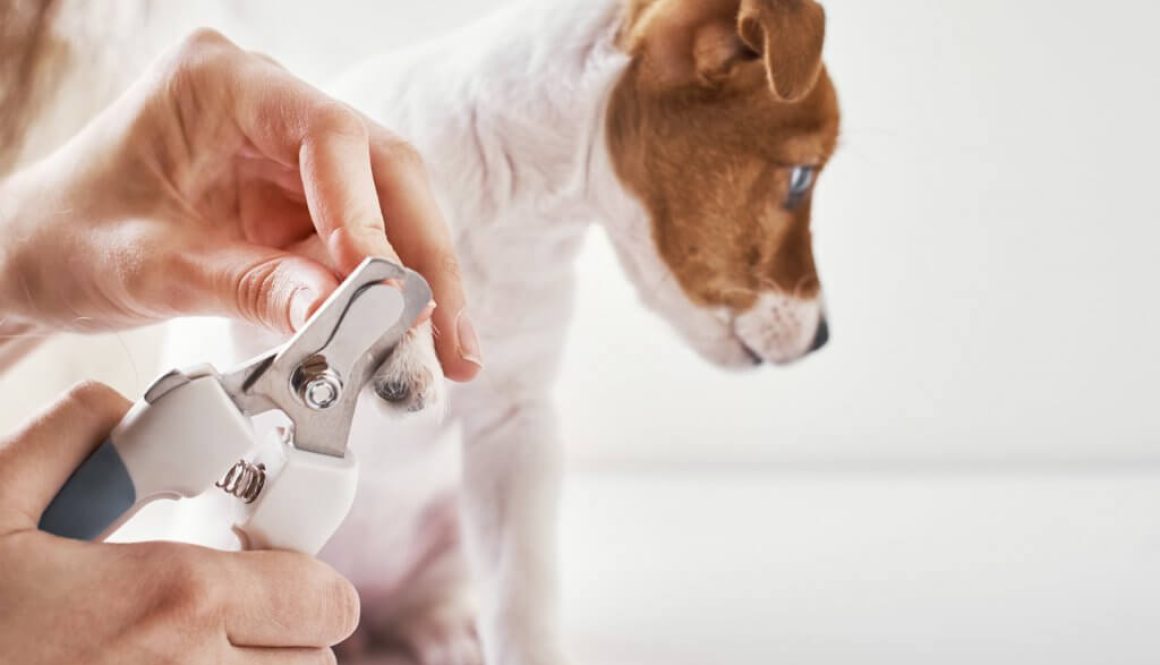Clipping Dog Nails
Clipping dog nails safely: Tips for trimming your dog’s nails at home without stress
Most dogs do not like having their nails trimmed – so start trimming your puppy’s nails early. This gets them use to having their paws touched, and your job of nail clipping much easier.
Some dogs will happily sit in your lap or on a table while you trim their claws. However, you might have a dog that needs two people – one to hold the dog and one to do the trimming! Don’t worry you aren’t alone!
If your dog is difficult or aggressive when having their nails clipped ask your groomer or vet to do it for you. Alternatively speak to your vet about a low-dose sedative that you can give your dog before nail clipping begins.
CLIPPERS
There are several types of nail clippers, including a guillotine type, a plier type, a scissors type and a grinding type.
The scissor and guillotine types don’t come with a safety guard and are more difficult to control, so cutting too far or at the wrong angle is commonly seen with these types of dog nail clippers.
Some people find the newer grinding type easier to use in dogs because you can shorten the nail more easily with less chance of injury. If used incorrectly these can still cause pain. Other downsides are they can overheat, can be noisy and cause vibrations (which some dogs hate) – so care is still needed.
It all depends on the dog and your ability to which nail tool is best. I find the small plier type with a safety guard the best, especially for older or more nervous dogs. This tool gives me peace of mind due to the safety guard that prevents cutting to far down the nail, and it has no noise or vibration like you would get from a grinder tool.

A COUPLE OF THINGS TO REMEMBER…
- The claws on the rear paws of a dog are often shorter and may require less trimming than those on the front paws.
- Unlike cats, dogs do not have retractable claws.
-
Also trim the dew claws that are located on the inner surface of the paw (unless they were removed due to health, safety or welfare reasons and not just for fashion or convenience!).
-
Some breeds of dogs have 2 sets of dew claws on the rear paws e.g. St Bernards.
-
Black nails are hard to clip as you cannot see the quick. Clip black nails slowly and little by little.
-
You can assess if a dogs nails are too long if they make a ‘clicking’ sound when walking on a floor.
- Walking or exercising your dog on a paved path/road will help keep your dogs nails short!
THE NAIL
A dogs nail is similar to ours. Like humans the pink part of the nail that can be seen is known as the ‘quick’. The quick is made up of nerves and blood vessels and is highly sensitive. With white nailed dogs the quick is easily seen but can be hard to see on black nailed dogs.
The quick will appear like a small pink center of a dog’s nail. The quick is shorter than the nail itself, and is located between the nail bed and the curve of the dog’s nail. This is what bleeds if you cut nails too short.
If you can’t see the quick look at the bottom of your dog’s black nails; there should be a groove on the underside this separates the hard nail from the soft cuticle – cut below the groove.
Be aware that the quick grows with the nail.
HOW TO CLIP
When looking at your dogs nail, a nail can be considered long when a lot of white nail is seen or the nail is curving downwards.
To trim a nail cut the nail cross-wise at a 45 degree angle below the quick (see diagram).
If you have a dog with very long nails start trimming off very small amounts to begin with. This allows the quick to recede back over time as it also grows with the nail.
When starting out or you’re not sure just take a little of the nail off at a time. If your dog isn’t co-operating or if you are nervous, go to your vet or groomer to get your dogs nails done.

